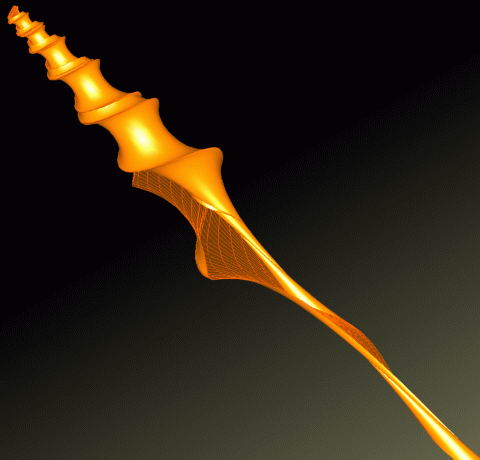

|
Sfb 288 Differential Geometry and Quantum Physics |
 Bianchi Surfaces
Bianchi Surfaces
 deforming a surface of revolution ora helicoidal surface
deforming a surface of revolution ora helicoidal surface
Bianchi surfaces are a subject of classical differential geometry. Given a surface having a smooth 1-parameter family of conjugated nets. The image of the Gauss map along such a particular net gives the (maybe complex) asymptotic line net on a Bianchi surface. The initial surface is called theassociated surface .
Since the nets on the associated surface forms a smooth family, Bianchi surfaces come in families, too.
Beyond the constant Gaussian curvature surfaces (a subset of Bianchi surfaces) only a few examples are known. One of these is the katenoid and its associated family. The family according to the deformation of the conjugated nets is just the associated family of the same surface in the meaning of a minial surface. But while here the action of the family is isospectral, on the further it is not!

The Bianchi surface family of a surface of revolution of negative Gaussian curvature.
The next simplest examples one can discuss are the associated families (in the sense defined above) of surfaces of revolution and helicoidal surfaces. It comes out that they either can be parametrized in terms of a certain Painleve V function where the screwing parameter (0 if it is a surface of revolution) is an extra free parameter.
The action of the free parameter in the Painleve V equation that described both, the surface of revolution and the helicoidal surface case.Moreover, the action of the associated family in this cases is just a scaling and reparametrizing of one surface and the surface of revolution or the helicoid surface is just a limit if one blow each surface up by a proper value smoothly depending on the family parameter.
Other self-similarity reductions exist reducing the system of partial differential equation to Painleve equation. But in no of the other cases the geometrical meaning behind is clear upo to now.
 Author: Ulrich Eitner
Author: Ulrich Eitner